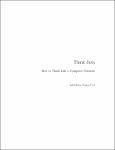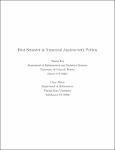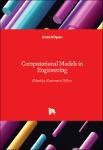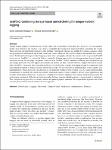Search
Author
- Nora, El-Rashidy (3)
- Christian, Homeyer (2)
- Haebom, Lee (2)
- Héctor, Martínez (2)
- next >
Subject
- Artificial Intelligence (3)
- artificial intelligence (3)
- CNNs (3)
- DNNs (3)
- next >
Date issued
Has File(s)
- true (282)
Search Results
"Think Java is a hands-on introduction to computer science and programming used by many universities and high schools around the world. Its conciseness, emphasis on vocabulary, and informal tone make it particularly appealing for readers with little or no experience. The book starts with the most basic programming concepts and gradually works its way to advanced object-oriented techniques.
In this fully updated and expanded edition, authors Allen Downey and Chris Mayfield introduce programming as a means for solving interesting problems. Each chapter presents material for one week of a college course and includes exercises to help you practice what you’ve learned. Along the way, you’ll see nearly every topic required for the AP Computer Science A exam and Java SE Programmer I cer... |
My purpose in writing this book is to give readers a view into the work of managing information technology in schools. IT professionals will notice differences (some nuanced and some significant) between the needs and expectations of IT users in business and IT in school. With the more complete and more accurate concept the nature of the computing environment necessary for successful schooling, which I intend to provide through this book, IT professionals will be better prepared to meet those needs. Educators will also benefit from this book by clarifying the nature of their IT needs and how these may be different from those that are familiar to IT professionals who are hired to work in your school. |
"The book is based on “First semester in Numerical Analysis with Julia”, written by Giray Ökten. The contents of the original book are retained, while all the algorithms are implemented in Python (Version 3.8.0). Python is an open source (under OSI), interpreted, general-purpose programming language that has a large number of users around the world. Python is ranked the third in August 2020 by the TIOBE programming community index, a measure of popularity of programming languages, and is the top-ranked interpreted language. We hope this book will better serve readers who are interested in a first course in Numerical Analysis, but are more familiar with Python for the implementation of the algorithms.
The first chapter of the book has a self-contained tutorial for Python, includin... |
Programming patterns are solutions to problems that require the creation of a small fragment of code that will be part of a larger program. Hence, this book is about teaching you how to write such fragments of code. However, it is not about teaching you the syntax of the statements in the fragments, it assumes that you already know the syntax. Instead, it is about finding solutions to problems that arise when first learning to program. |
This open access book provides information how to choose and collect the appropriate metrics for a software project in an organization. There are several kinds of metrics, based on the analysis of source code and developed for different programming paradigms such as structured programming and object-oriented programming (OOP). This way, the book follows three main objectives: (i) to identify existing and easily-collectible measures, if possible in the early phases of software development, for predicting and modeling both the traditional attributes of software systems and attributes specifically related to their efficient use of resources, and to create new metrics for such purposes; (ii) to describe ways to collect these measures during the entire lifecycle of a system, using minima... |
This open access book makes quantum computing more accessible than ever before. A fast-growing field at the intersection of physics and computer science, quantum computing promises to have revolutionary capabilities far surpassing “classical” computation. Getting a grip on the science behind the hype can be tough: at its heart lies quantum mechanics, whose enigmatic concepts can be imposing for the novice.
This classroom-tested textbook uses simple language, minimal math, and plenty of examples to explain the three key principles behind quantum computers: superposition, quantum measurement, and entanglement. It then goes on to explain how this quantum world opens up a whole new paradigm of computing.
The book bridges the gap between popular science articles and advanced text... |
The book provides and discusses different examples from engineering, as well as where and how numerical methods contribute to more efficient simulation environments. There are 7 chapters in the book, covering different aspects of modelling and simulation in engineering and technology. In Chapter 1, a three-dimensional simulation technology for physical processes in concentric hydraulic brakes with a throttling-groove partly filled hydraulic cylinder is considered. Chapter 2 addresses the behavior of functionally graded solids under dynamic impact loading within the framework of linear elasticity using the parallel explicit algorithm. Chapter 3 discusses the case studies that revealed premature failures of stiffer elements prior to utilising the full capacity of more deformable eleme... |
This open access book offers an initial introduction to programming for scientific and computational applications using the Python programming language. The presentation style is compact and example-based, making it suitable for students and researchers with little or no prior experience in programming.
The book uses relevant examples from mathematics and the natural sciences to present programming as a practical toolbox that can quickly enable readers to write their own programs for data processing and mathematical modeling. These tools include file reading, plotting, simple text analysis, and using NumPy for numerical computations, which are fundamental building blocks of all programs in data science and computational science. At the same time, readers are introduced to the fun... |
Traditional local tamper-evident logging systems use cryptographic ratchets. In previous works, we presented SealFS (from now on, SealFSv1), a system that follows a radically different approach for local tamper-evident logging based on keystream storage. In this paper, we present a new version, SealFSv2, which combines ratcheting and storage-based log anti-tamper protection. |
Sample correlations and feature relations are two pieces of information that are needed to be considered in the unsupervised feature selection, as labels are missing to guide model construction. Thus, we design a novel unsupervised feature selection scheme, in this paper, via considering the completed sample correlations and feature dependencies in a unified framework. Specifically, self-representation dependencies and graph construction are conducted to preserve and select the important neighbors for each sample in a comprehensive way. |










